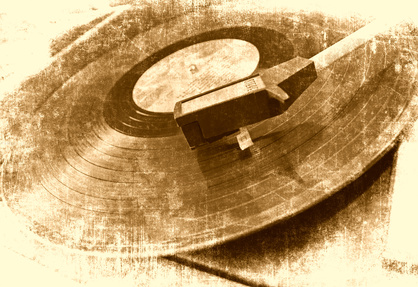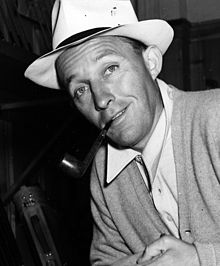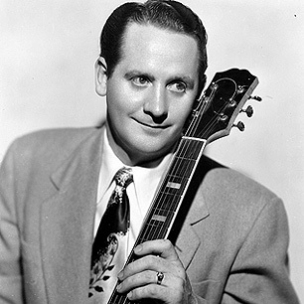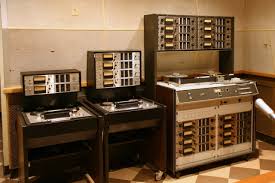40 Years That Changed Audio Engineering May 21, 2014  Would you be horrified to learn that the Nazis innovated audio
technology that morphed into the home recording studios that we use today? Would you be horrified to learn that the Nazis innovated audio
technology that morphed into the home recording studios that we use today? Maybe you'd feel better knowing that guitar legend Les Paul had a hand in transforming their invention into a tool that results in today's richly-layered sound. The history of audio engineering, it turns out, is full of strange bedfellows. And you don't have to be a history buff to appreciate the irony of propaganda morphing into modern voice over and popular music. All it takes is an ability to appreciate a delicious plot twist. (I know, it's only rock and roll, but we like it, like it, yes we do.) A SOUND RUSE  Our story begins with radio broadcasts in Europe during World War
II. Back then, the only reliable way to
produce high-quality sound was to do it live. Our story begins with radio broadcasts in Europe during World War
II. Back then, the only reliable way to
produce high-quality sound was to do it live. Hitler's voice drew Allied fire on a regular basis, because the chance to strike a studio where he was speaking was too precious to pass up. But after being misdirected into attacking places where he was missing in action once too often, the Allies finally tumbled to the fact that the Nazis had developed a new, high-fidelity recording technology that was mimicking the Fuhrer's voice. The norm for pre-recorded segments during those years was discs. Because disc sound quality was so poor, in America, the radio networks hardly ever allowed them to be used, and tightly restricted their use. It's no wonder the Allies were fooled! They thought they'd know a recording when they heard one. ENTER THE SOLDIER When Germany fell to the Allies in 1944 and 1945, the Americans swept in and learned that the Nazis' propaganda machine ran on a new kind of recorder that used magnetic tape. The US Army Signal Corps made this discovery as part of their mission to find out everything they could about German radio and electronics. Jack Mullin, a member of a unit inspecting a Nazi command center near Frankfurt, made a chance visit to a nearby radio station where he was given two Magnetophon recorders and 50 reels of tape. They fascinated him, so he shipped them back to his home in San Francisco, where, over the next two years, he first studied them, then improved their performance. Mullin's goal was to develop a new medium for sound for Hollywood movies. CUE THE SINGER Early in his efforts to find funding for his film sound project, Mullin got a lucky break.  He attracted the
attention of the technical director of the biggest radio star of that era –
Bing Crosby. Crosby was weary of the
punishing schedule imposed by live broadcasts, and eager to find an alternative
that would allow him to perform in the more relaxed atmosphere of a recording
studio. He attracted the
attention of the technical director of the biggest radio star of that era –
Bing Crosby. Crosby was weary of the
punishing schedule imposed by live broadcasts, and eager to find an alternative
that would allow him to perform in the more relaxed atmosphere of a recording
studio. Mullin soon found himself working for Crosby as his chief engineer, and his precise editing introduced a new standard in radio that was notable for its more pleasing pace and flow. Bing Crosby was so enamored of the new recording technology, that in 1948, he invested $50,000 in a small California electronics firm – Ampex – that had the potential to produce the new high-fidelity recorders on larger scale. (That would be about half a million dollars in today's market, by the way.) THE GUITAR MAKER  Crosby gave one of the first Ampex Model
200A prototypes to his friend, musician and guitar-maker Les Paul. Crosby gave one of the first Ampex Model
200A prototypes to his friend, musician and guitar-maker Les Paul. Paul had complained to Crosby that he was unhappy with the way his records sounded, and Crosby's response was to not only gift Paul with the new recorder, but also to encourage him to build his own studio so that he could control acoustics. After briefly rejecting the idea, Les Paul decided to convert the garage of his home in Hollywood into a recording studio. (Yet another legendary California garage start-up!) Les Paul was the first musician / audio engineer to successfully develop multi-track recording. He had been experimenting with it since the 1930s on acetate disks. On discs, each track was recorded over the last, not in parallel, as would later become the norm. Paul's production values were so exacting, that he was known to discard as many as 500 discs to produce a single recording! The invention of gamma ferric oxide coated acetate tape by 3M Scotch made it possible to capture multiple signals on the same medium. In 1957, nine years after their first recorder came out, Ampex innovated an eight-track recording device. Les Paul bought the first model, which also included a custom eight-track mixing console designed especially for him. THE OCTOPUS & THE MONSTER The first person to hear a recording on this rig was comedian W.C. Fields, who quipped, "My boy, you sound like an octopus." In honor of this witticism, Les Paul named the recorder "the octopus" and referred to the console as "the monster."  In 1966, Ampex offered their first 16-track recorders, and their final
24-track recorder came out in 1979. (Photo: l-r, Ampex 2-, 4-, and 16-track recorders) In 1966, Ampex offered their first 16-track recorders, and their final
24-track recorder came out in 1979. (Photo: l-r, Ampex 2-, 4-, and 16-track recorders)Their last machines were rugged and had outstanding sound quality, but unfortunately, they were too pricey to compete in a rapidly-changing, soon-to-be digital market. Ampex withdrew from the professional recorder market entirely in 1983. Not bad for 40 years of audio innovation! From one kind of "monster" to another, these developments in audio engineering have (literally) put this remarkable technology at our fingertips. We hear a richer world of sound because of it. ------------------------------------------------  ABOUT ELIZABETH ABOUT ELIZABETHElizabeth Holmes is a writer, voice actor, and staff editor at VoiceOverXtra, based in Northern California. She is also editor of VoiceOverXtra's book division, including Voice Over Legal, by voice actor / attorney Robert Sciglimpaglia. Email: elizabeth@HolmesVoice.com Earlier Sounds Odd Columns: http://bit.ly/SoundsOddColumns |
|
|
|
Tell Us What YOU Think!
Please Note: Since we check for spam, there will be a slight delay in the actual posting of your comment.
Comments (8)
Howard Ellison
6/15/2023 at 7:04 AM
Such great history! Such heroes! Here in UK we had (and still have) great sound creators and led in excellent home hi-fi. Yet, at the same time, my early BBC-tv trainig revolved around a mixing desk with rotary faders, powered by pre-war 4-volt tubes! Never mind, the creative spirit was alive and the sound from those mighty LS5 speakers was full and natural. Saw a fancied-up one in a nostalgia store this week: a mere 17 thousand pounds!
Michael Blain-Rozgay
5/24/2014 at 6:12 PM
Elizabeth, what a great article. You hit it out of the park.
Graeme Spicer
5/22/2014 at 11:15 AM
A great story, Elizabeth. Thanks for taking the time to write it down and share! I learned a lot from this post - keep 'em coming!
Dan Friedman
5/21/2014 at 10:53 PM
Interesting stuff, Elizabeth. Great read! Here is another interesting tidbit. Tom Dowd, legendary music producer who was also heavily involved in the development of multitrack recording, also worked on the Manhattan Project. Not the band... the atomic bomb.
Debby Barnes
5/21/2014 at 5:23 PM
Oh my land, Elizabeth. This is fascinating. Truly. I'm so pleased you wrote it. I feel properly cued-up. What a fine and fulfilling history lesson! Thank you. :)
Larry Wayne
5/21/2014 at 1:51 PM
Had no idea the Germans and Bing Crosby had any involvement in the development of recording techniques! Thanks for the well written history lesson!
Ann Richardson
5/21/2014 at 12:25 PM
Elizabeth, your succinct summarizing of these advances is interesting, easy to read, and engaging. Great work!
Roxanne
5/21/2014 at 9:30 AM
What an incredible story. And beautifully told! Thank you for another wonderful article, Elizabeth.

 SOUNDS ODD #24
SOUNDS ODD #24
.gif)







click for new article alerts